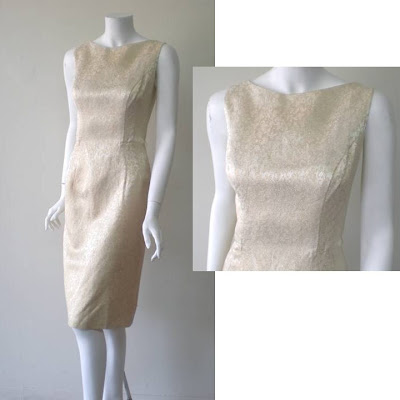
The February issue of "V" fashion magazine features "size", with a much publicized viewing of large size models wearing current fashion trends.
Oddly, when it comes to vintage, most people assume that the entire population prior to 1980 was tiny and slender, without curves or any additional body padding. To the contrary, sizes for larger vintage lovers are there if you seek them out.
Oddly, when it comes to vintage, most people assume that the entire population prior to 1980 was tiny and slender, without curves or any additional body padding. To the contrary, sizes for larger vintage lovers are there if you seek them out.
Shift in Tidepool patterned fabric: late 1960's
Shift in Red/White/Blue print: mid to late 1960's (sold)
It's my belief that large size vintage fashion is scarce because those sizes are in demand.
Rather than being few and far between, the size range sells quickly. Another factor may be that vintage fashion has been in and out of popularity since the late 1960's, so that some garments are just plain worn out and no longer in circulation.
Rather than being few and far between, the size range sells quickly. Another factor may be that vintage fashion has been in and out of popularity since the late 1960's, so that some garments are just plain worn out and no longer in circulation.
Don't let these photos fool you, these are large size fashions, pinned onto a whisp of a figure to show them.
Tiki Floral Luau Sarong: 1970's (sold)
Teal Blue Crystal Pleated Dress: late 1970's
Some of these great fashions are currently for sale on Etsy. Others have been sold or are waiting their turn to be listed for sale in the future.
Some of these great fashions are currently for sale on Etsy. Others have been sold or are waiting their turn to be listed for sale in the future.
Lace Dress by Gloria Swanson: early 1950's (sold)
If you are looking for large size vintage, check PintuckStyle on Etsy often, since these great styles sell fast!














